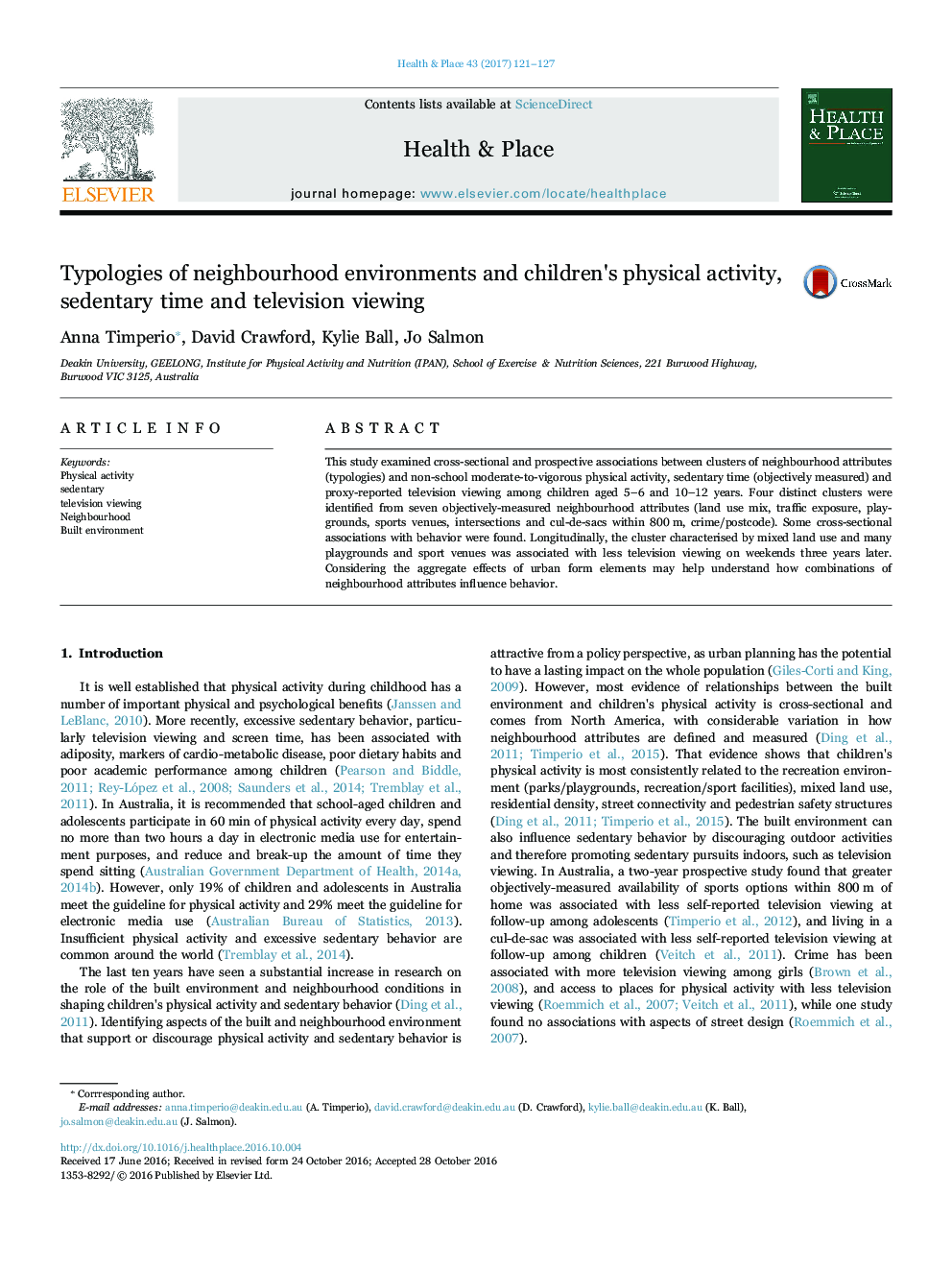| Article ID | Journal | Published Year | Pages | File Type |
|---|---|---|---|---|
| 5114877 | Health & Place | 2017 | 7 Pages |
Abstract
This study examined cross-sectional and prospective associations between clusters of neighbourhood attributes (typologies) and non-school moderate-to-vigorous physical activity, sedentary time (objectively measured) and proxy-reported television viewing among children aged 5-6 and 10-12 years. Four distinct clusters were identified from seven objectively-measured neighbourhood attributes (land use mix, traffic exposure, playgrounds, sports venues, intersections and cul-de-sacs within 800Â m, crime/postcode). Some cross-sectional associations with behavior were found. Longitudinally, the cluster characterised by mixed land use and many playgrounds and sport venues was associated with less television viewing on weekends three years later. Considering the aggregate effects of urban form elements may help understand how combinations of neighbourhood attributes influence behavior.
Related Topics
Health Sciences
Medicine and Dentistry
Public Health and Health Policy
Authors
Anna Timperio, David Crawford, Kylie Ball, Jo Salmon,
